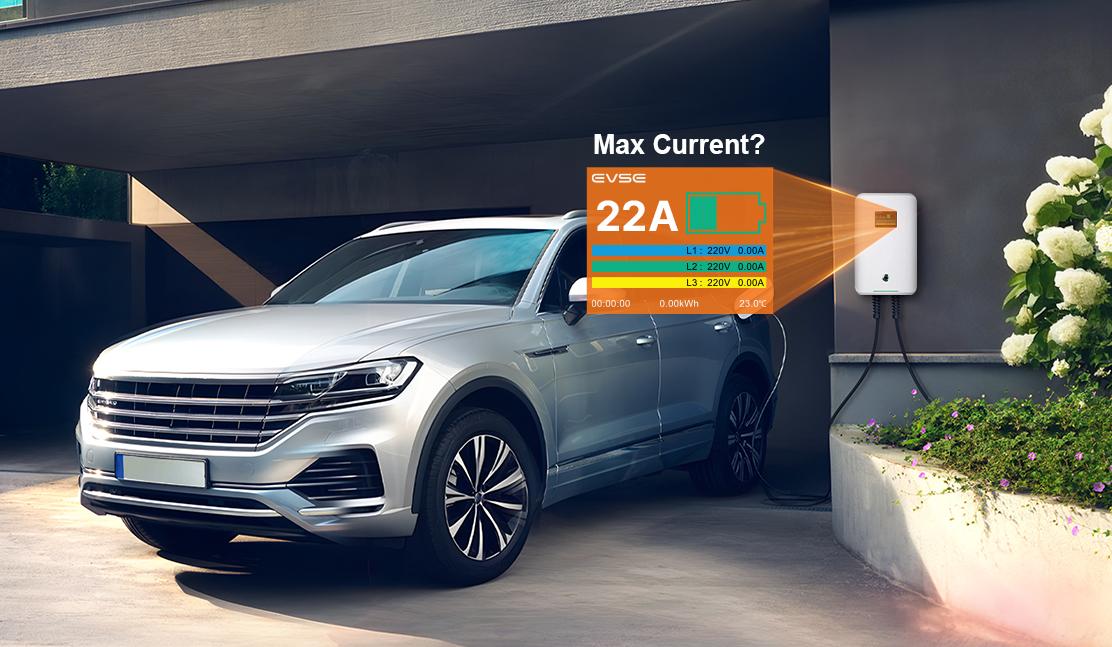As more and more people use electric vehicles, EV chargers have become the most indispensable item for EV users. Whether you’re traveling, commuting, or working remotely, keeping your devices powered up is essential. When it comes to charging options, two choices stand out: Portable EV Chargers and Wallbox Chargers. While both serve the same purpose—keeping your EV charged—they differ significantly in convenience, speed, and functionality. In this article, we’ll compare the advantages and disadvantages of portable charging box and wallbox chargers to help you determine which one best fits you.

1. Portable EV Charger
A portable EV charger (also called portable charging box, Mode 2 charger) is a compact charging device that can be carried in an EV and plugged into a standard power outlet to charge the battery.
Technical Specifications
Power Source: Connects to a regular household socket (e.g., Schuko) or an industrial power socket (e.g., CEE blue/red) for higher power output.
Power Output Range:
- Standard household outlet (Schuko, 230V, 10A) → 2.3 kW (Slowest)
- Industrial single-phase outlet (CEE 230V, 16A/32A) → 3.7–7.4 kW
- Industrial three-phase outlet (CEE 400V, 16A/32A) → Up to 22 kW
Connector Type: Usually Type 2 in Europe, but adapters may be available for Type 1.
⚡Charging Speed:
- A standard 2.3 kW charger adds about 8–10 km per hour of charge.
- A 3.7 kW charger adds about 15 km per hour of charge.
- A 7.4 kW charger adds about 30–40 km per hour of charge.
- A 22 kW portable charger (if supported by the EV) can add up to 100 km per hour, but this requires a suitable power source.
Advantages
✔ Portability: Small, lightweight, and easy to carry. Useful for people who need charging flexibility.
✔ No Installation Needed: Can be plugged into existing sockets, avoiding installation costs.
✔ Versatile: Can be used at home, workplaces, or even campsites where an outlet is available.
✔ Lower Cost: Typically cheaper than installing a fixed charging station.
Limitations
❌ Slower Charging: Compared to dedicated EV charging stations, especially when using a standard household socket.
❌ Power Limitations: Home electrical grids may not always support high-power charging.
❌ Safety Concerns: Long-term use of household sockets can cause overheating and potential hazards
Best Use Cases*
- Ideal for emergency charging or when no dedicated EV charger is available.
- Useful for EV owners who don’t drive long distances and can charge overnight.
- Great for people who travel frequently and need to charge in various locations.
📍Morec Recommendation: Different power chargers are available, safe and efficient.
2. Wallbox Charger
A Wallbox Charger (often called EV charging station ) is a dedicated charging unit that provides a stable and faster way to charge an EV. These can be installed at home, workplaces, parking lots, and public areas.
Technical Specifications
Power Source: Requires a dedicated electrical installation, typically connected directly to the main power grid.
⚡Charging Speed:
AC Charging Stations (Slow/Fast Charging)
- 3.7 kW (16A, single-phase, 230V) → 15 km range per hour
- 7.4 kW (32A, single-phase, 230V) → 30–40 km per hour
- 11 kW (16A, three-phase, 400V) → 50–60 km per hour
- 22 kW (32A, three-phase, 400V) → 100 km per hour
Connector Type: Most home chargers use Type 2.
Advantages
✔ Faster Charging: Provides a much higher power output than portable EV chargers.
✔ Convenience: Once installed, you simply plug in and charge without dealing with cables or adapters.
✔ Smart Features: Many have WiFi, Bluetooth, APP control and RFID control for monitoring and scheduling.
✔ Safer: Designed for long-term use with better thermal management and surge protection.
Limitations
❌ Higher Cost: Depends on the wallbox chargers model and installation.
❌ Requires Installation: Needs professional installation.
❌ Not Portable: Once installed, it cannot be moved easily.
Best Use Cases*
- Homeowners who want a reliable and fast way to charge their EV daily.
- Businesses provide charging infrastructure for employees or customers.
- Apartment buildings installing shared chargers in parking areas.
- Public parking lots and highways where fast charging is needed for long trips.
📍MOREC Recommendation: Different power and different model. Morec EV charging station can adapt to extreme environments and can charge with confidence.
📌Comparison Table: Portable EV Charger vs. EV Charging Station
|
Feature |
Portable EV Charger |
EV Charging Station |
|
Mobility |
Highly portable |
Fixed installation |
|
Installation Required |
No |
Yes |
|
Power Output |
2.3 kW – 22 kW |
3.7 kW – 22 kW |
|
Charging Speed |
Slow |
Faster |
|
Best For |
Travel, emergencies, occasional use |
Daily use, long-term reliability |
|
Safety |
Basic, can overheat household sockets |
Advanced safety features |
|
Smart Features |
BASIC control |
RFID control, APP control |
|
Cost |
Lower |
Higher (include installation) |
How to Choose Between a Portable EV Charger and a Wallbox Charger?
Choose a Portable EV Charger if:
✅ You need a backup charging solution for emergencies.
✅ You frequently travel and need a charger for different locations.
✅ You don’t want to spend on installing a permanent charger.
Choose a Wallbox Charger if:
✅ You own an EV and charge it regularly at home.
✅ You want faster charging with smart features.
✅ You have a dedicated parking spot or garage with proper wiring.
🌟Morec chargers have 18% automatic discount. 🛒BUY IT NOW!


